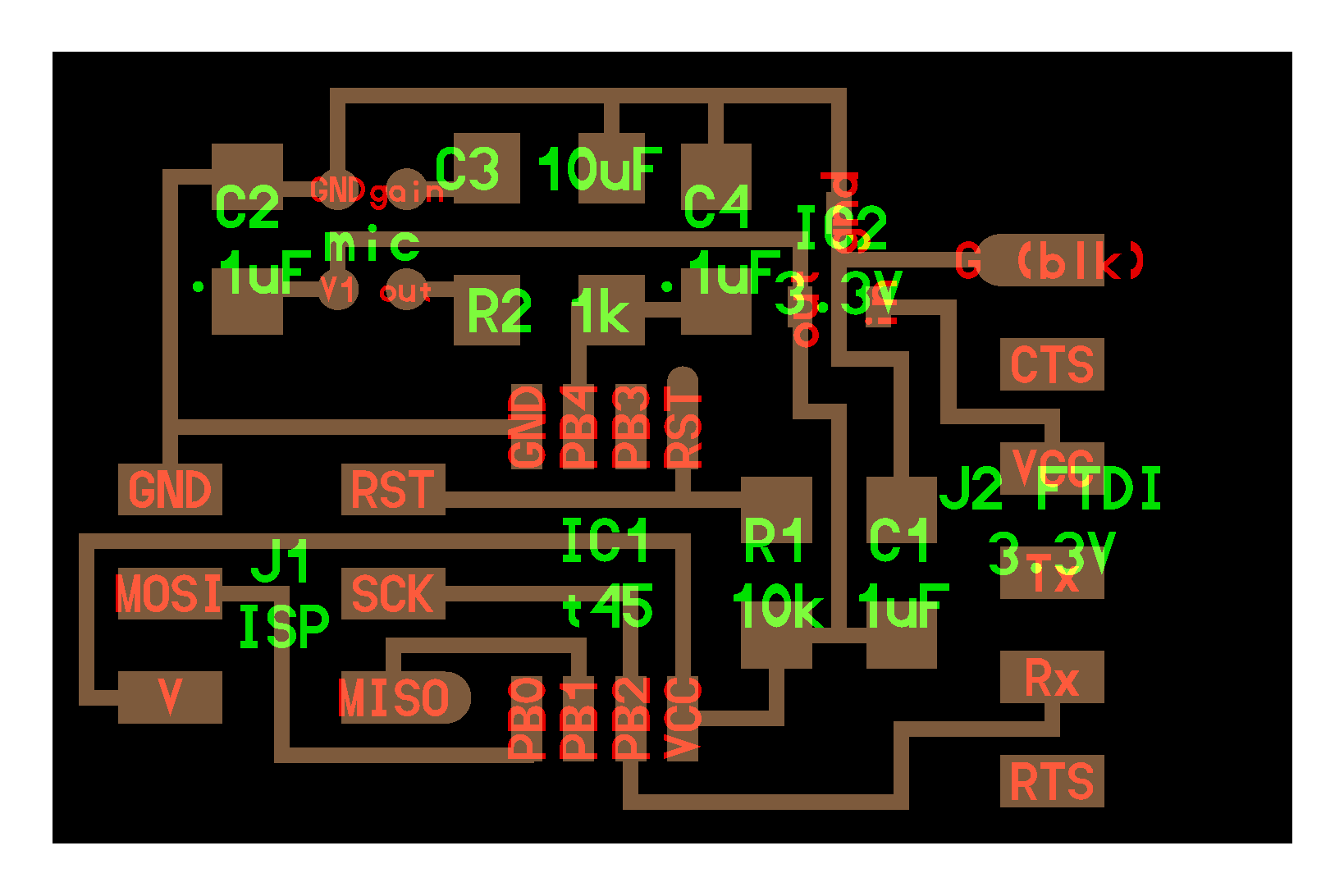Technologies Used:
❖ Shopbot
Circuit Board Milling
I decided to try a simple board using the MEMS mic component, using Professor Gershenfeld's design.

Cutting and milling the board was a less-than-smooth experience. I tried using the Roland Modela Mill again but had multiple mysterious issues with fabmodules, and the bit not lifting itself up during the jogging phase. After a couple of tries I decided to
go back to using the shopbot.
Soldering/Programming
Soldering was a straightforward experience. The only trouble I had was trying to solder down the MEMS mic, since the solder needed to go onto the bottom rather than the sides of the component. I tried the technique where I first place solder on the bottom, then
on the PCB, and lastly use a heat gun while pressing the component down on the board with a tweezer. After a couple of tries fiddling with it I eventually got it to work properly.
Programming the board itself was also straightforward, as I just used an AVRISP programmer like I did for the previous week's assignment. The more difficult part was testing the program using Python. I use a windows computer, so downloading Python and trying to use
the program was not very straightforward at first. I went through Professor Gersenfeld's code, and had to make a couple of tiny tweaks (such as changing Tkinter to tkinter). Also, I needed to figure out how to download pySerial to import into the code - there was probably a better
way to do it, but the process for me was convoluted trial and error. Finally, when I got the code to run I needed to figure out how to put in the command line arguments. I looked on device manager and just guessed it would be "COM3" or whatever USB port I was using,
and I was right! The mic at first seemed fairly insensitive to sound, so I tweaked the gain on the code to get better visualization.